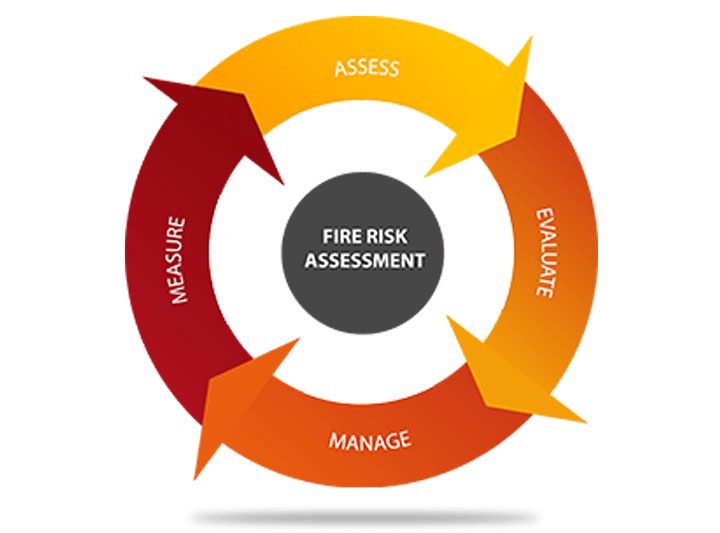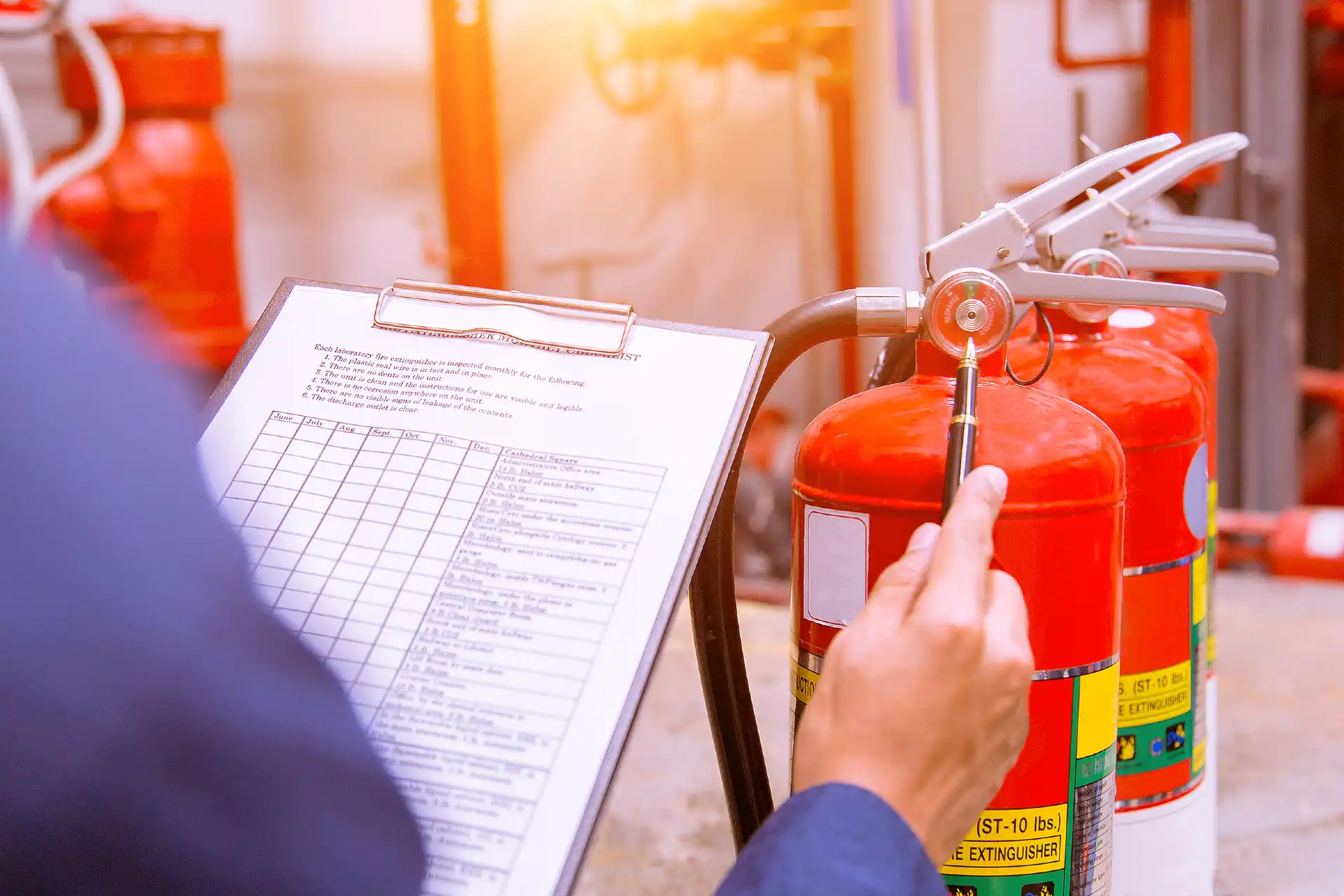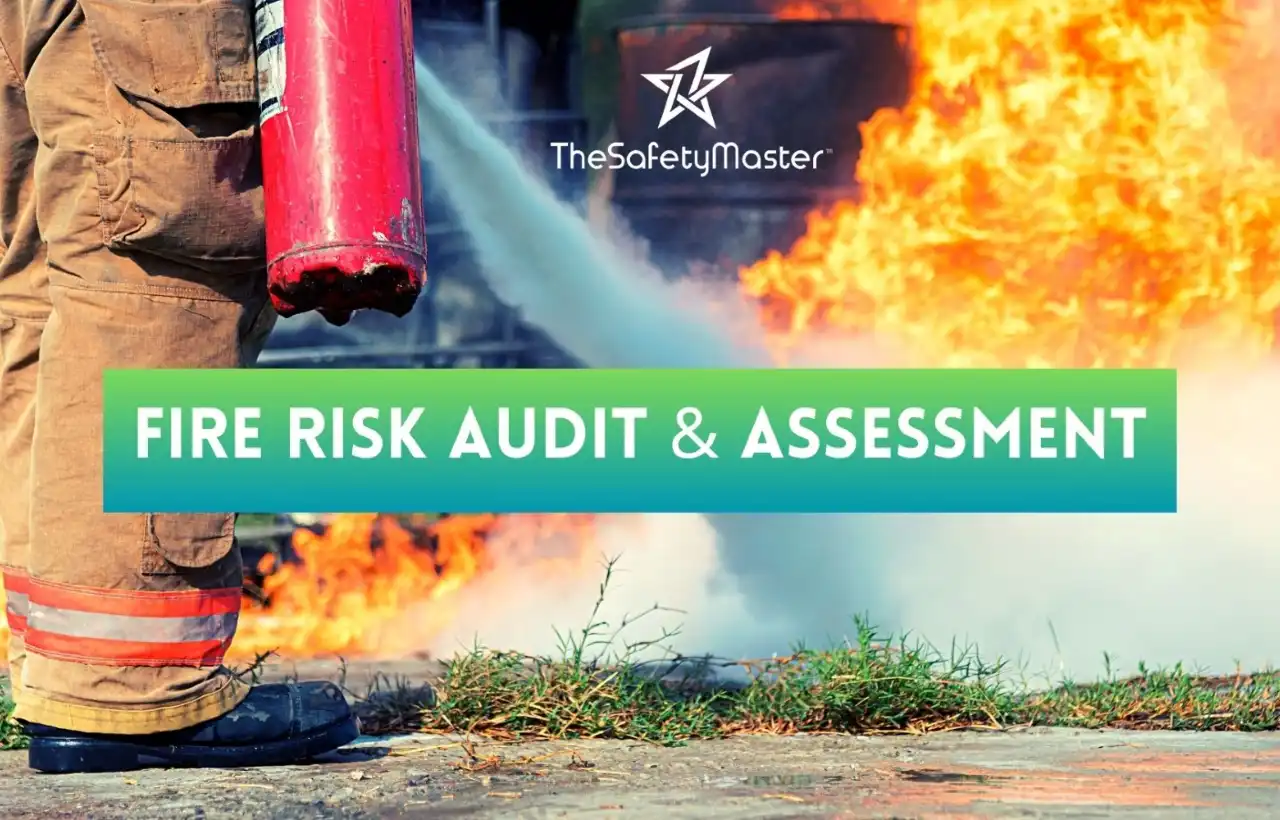What is Fire Risk Assessment and Why is it Important?
Fire risk assessment is a systematic evaluation of potential fire hazards within a building or environment. Its primary purpose is to identify risks that could lead to a fire and determine the necessary precautions to minimize or eliminate those risks. Fire and risk assessment processes are essential because they help protect lives, property, and assets by preventing fires before they occur. This proactive approach is critical in both residential and commercial settings, as it ensures compliance with legal safety standards and provides peace of mind to occupants.
Understanding the importance of a fire risk assessment is crucial for any organization. Not only does it reduce the likelihood of fire-related incidents, but it also aids in creating a safer working environment. Furthermore, adhering to fire safety risk assessment guidelines can significantly reduce insurance premiums and potential liabilities, making it an essential component of any comprehensive safety plan.

How Does a Fire and Risk Assessment Differ from Other Safety Assessments?
A fire and risk assessment focuses specifically on identifying and mitigating risks associated with fire hazards, whereas other safety assessments might focus on broader areas such as workplace safety, electrical safety, or chemical safety. The unique aspect of a fire and explosion risk assessment is that it delves deeply into the potential causes of fires and explosions, identifying not only the risks but also the specific measures needed to address them. While general safety assessments look at overall workplace hazards, a fire risk assessment zeros in on fire-related risks, ensuring that all possible ignition sources, fuel sources, and fire spread factors are carefully considered and mitigated.
What Are the Key Levels of Fire Risk Assessment?
- Basic Level of Fire Risk Assessment:
- Focuses on identifying immediate fire hazards.
- Involves implementing simple control measures to mitigate risks.
- Suitable for less complex environments like small offices or residential buildings.
- Intermediate Level of Fire and Risk Assessment:
- Includes a more detailed evaluation of fire spread potential.
- Considers evacuation procedures and ensures they are effective and safe.
- Assesses the performance and coverage of fire suppression systems.
- Advanced Level of Fire Risk Assessment:
- Necessary for more complex environments such as industrial facilities or large commercial buildings.
- Requires a comprehensive evaluation of all potential fire hazards, including machinery, chemicals, and processes.
- Involves collaboration with fire safety engineers to ensure thorough assessment and risk mitigation.
- Comprehensive Fire Safety Risk Assessment:
- Integrates advanced levels with continuous monitoring and regular updates.
- Ensures all fire safety measures are up-to-date and effective.
- Crucial for environments with high fire risk potential, ensuring robust safety systems are in place.
- Importance of Tailoring Fire Risk Assessments:
- Each level should be tailored to the specific needs and complexity of the environment.
- Ensures that all necessary fire safety risk assessment steps are taken to protect lives and property.
Process of Fire Safety Audit
TheSafetyMaster™ ensure the following during the Fire Gap Assessment or Fire Safety Audit-
- Fire Prevention System
- Fire Protection System
- Fire Mitigation System
- Fire Load Calculation
How is a Fire and Explosion Risk Assessment Conducted?
A fire and explosion risk assessment involves a thorough examination of all potential fire hazards, including sources of ignition and combustible materials. The process begins with identifying areas where fires or explosions are most likely to occur. This includes evaluating equipment, chemicals, and processes that may pose a risk. Once hazards are identified, the next step is to assess the effectiveness of existing fire prevention and suppression systems. This fire and explosion risk assessment process helps to pinpoint any gaps in current safety measures and recommend improvements. Regular reviews and updates to the fire risk assessment ensure that new hazards are promptly addressed.
What Role Does the Fire Department Play in Community Risk Assessments?
The fire department community risk assessment plays a vital role in identifying and mitigating fire risks within a community. Fire departments conduct fire risk assessments for public buildings, schools, and other community facilities to ensure they meet safety standards. These assessments help fire departments understand the specific fire risks in their jurisdiction and allocate resources effectively. By collaborating with local businesses and organizations, fire departments can enhance their fire department community risk assessment efforts, ensuring a comprehensive approach to fire safety within the community.
Management’s role in protecting workplace from fire hazards
-
1.Emergency Preparedness
2.Mockdrills
3.Trainings and Instructions to handle Fire Emergencies

Emergency Rescue and Evacuation Plan
When opting for TheSafetyMaster™ Emergency Response and Planning Training the above can be ensured.
How can we help?
Contact us For expertise in Fire Safety Assessment and in turn maximize workplace safety and protect property and assets from fire hazards.
How is a Fire and Explosion Risk Assessment Conducted?
A fire and explosion risk assessment involves a thorough examination of all potential fire hazards, including sources of ignition and combustible materials. The process begins with identifying areas where fires or explosions are most likely to occur. This includes evaluating equipment, chemicals, and processes that may pose a risk.
Once hazards are identified, the next step is to assess the effectiveness of existing fire prevention and suppression systems. This fire and explosion risk assessment process helps to pinpoint any gaps in current safety measures and recommend improvements. Regular reviews and updates to the fire risk assessment ensure that new hazards are promptly addressed.
What Role Does the Fire Department Play in Community Risk Assessments?
The fire department community risk assessment plays a vital role in identifying and mitigating fire risks within a community. Fire departments conduct fire risk assessments for public buildings, schools, and other community facilities to ensure they meet safety standards. These assessments help fire departments understand the specific fire risks in their jurisdiction and allocate resources effectively. By collaborating with local businesses and organizations, fire departments can enhance their fire department community risk assessment efforts, ensuring a comprehensive approach to fire safety within the community.

How is a Hotel Fire Risk Assessment Different from Other Assessments?
A hotel fire risk assessment is unique due to the specific challenges hotels face in terms of fire safety. Hotels accommodate a large number of people, many of whom may be unfamiliar with the building's layout. Therefore, a hotel fire risk assessment must prioritize clear evacuation routes, fire alarms, and fire suppression systems. Additionally, hotels often have kitchens, laundries, and other facilities that pose higher fire risks. The fire and risk assessment for hotels must take these factors into account, ensuring that fire hazards are identified and mitigated across all areas of the hotel.
What Are the Specific Steps in an Office Fire Risk Assessment?
An office fire risk assessment involves several key steps. First, the assessment identifies potential fire hazards, such as electrical equipment, flammable materials, and obstructed exit routes. Next, the fire safety risk assessment steps involve evaluating existing fire prevention measures, such as smoke alarms, fire extinguishers, and emergency exits.
The office fire risk assessment should also include a review of fire safety training for employees and the effectiveness of fire evacuation drills. Regular updates to the fire risk assessment ensure that new risks are addressed and that all safety measures remain effective.
How Do You Conduct a Warehouse Fire Risk Assessment?
A warehouse fire risk assessment focuses on the unique fire risks present in a warehouse environment. Warehouses often store large quantities of combustible materials, making fire prevention a top priority. The fire and risk assessment process in a warehouse begins with identifying potential ignition sources, such as machinery, electrical equipment, and forklifts.
Next, the warehouse fire risk assessment evaluates the effectiveness of fire suppression systems, such as sprinklers and fire extinguishers. Proper storage practices and clear access to fire exits are also essential components of the fire safety risk assessment for warehouses.
What Are the Essential Fire Safety Risk Assessment Steps?
The essential fire safety risk assessment steps involve identifying fire hazards, evaluating the likelihood of a fire occurring, and implementing measures to reduce or eliminate those risks. This process begins with a thorough risk assessment for fire hazards, including electrical equipment, flammable materials, and potential ignition sources.
The next step is to assess the effectiveness of fire prevention and suppression systems. Finally, regular reviews of the fire risk assessment ensure that all safety measures remain up-to-date and effective.
How Do You Perform a Risk Assessment for Fire Hazards?
Performing a risk assessment for fire hazards involves identifying potential fire hazards, assessing the likelihood of a fire occurring, and implementing measures to mitigate those risks. The process begins with a comprehensive fire risk assessment, focusing on ignition sources, fuel sources, and fire spread potential. Once hazards are identified, the next step is to implement fire prevention measures, such as regular equipment inspections, proper storage of flammable materials, and clear access to fire exits. Regular reviews and updates to the fire and risk assessment ensure that new hazards are promptly addressed.
What is a Fire Risk Assessment Certificate and Why is it Necessary?
A fire risk assessment certificate is a document that certifies that a building has undergone a fire risk assessment and meets all relevant fire safety standards. This certificate is often required by law and serves as proof that the building is compliant with fire safety regulations. Obtaining a fire risk assessment certificate is essential for legal compliance and can also reduce insurance premiums. It provides assurance to occupants and stakeholders that the building is safe and that all necessary precautions have been taken to prevent fires.
How Can You Ensure Comprehensive Fire Safety Risk Assessment?
To ensure a comprehensive fire safety risk assessment, it's essential to follow all fire safety risk assessment steps meticulously. This includes identifying potential fire hazards, evaluating the effectiveness of fire prevention and suppression systems, and ensuring that all safety measures are regularly reviewed and updated. A thorough fire risk assessment also involves obtaining a fire risk assessment certificate to demonstrate compliance with safety standards. By following these steps, you can ensure that your fire safety measures are effective and up-to-date, reducing the risk of fire-related incidents.
